Figures & data
Figure 1 Real-time quantitative RT-PCR analysis of drought-responding genes. Samples were randomly selected to represent genes with altered transcript levels in the different experimental samples and in the wild type controls. Y-axis shows the relative transcript levels levels compared with Ubiquitin. The At3g02480 gene encodes an ABA-responsive protein and the At3g17520 gene encodes a LEA protein; At5g44020 encodes a class B acid phosphatase; At1g13260 and At2g21220 encode proteins implicated in the brasinosteroid and auxin responses, respectively; At1g75250 is a transcription factor from the Myb-family, while At2g10940 and At1g29660 encode lipid transfer and lipid hydrolyze activities, respectively.
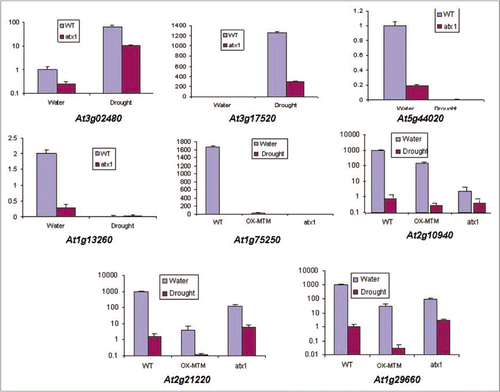
Figure 2 Transcript levels of the ATX1 gene upon exposure to water withdrawal. Real-time RT-PCR assay of the ATX1 gene transcript levels in non-stressed wild type leaves and in leaves exposed to air for two hours (see text for details).
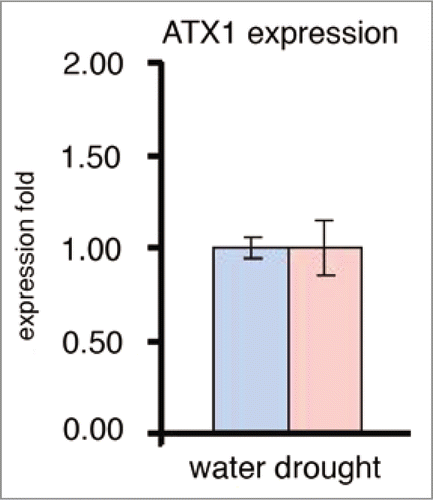
Figure 3 The Arabidopsis Myotubularin homolog At3g10550: domain structure, enzyme activity and AtMTM1 transcript levels under irrigated and water deficit conditions. (A) Structure of the Arabidopsis At3g10550 protein AtMTM (top) and the human MTMR2 (bottom). Domains are as defined in Begley and Dixon;Citation33 (B) Phosphoinositide 3′-phosphatase activity of the recombinant protein containing RID-PTP-SID domains with PtdIns3P and PtdIns3,5P2 as substrates; (C) activity of PTeN (phosphatase and tensin) assayed in parallel as a positive control; (D) Real-time RT-PcR assay of the AtMTM1 gene transcript levels in non-stressed wild type leaves and in leaves stressed by exposure to air for two hours; (E) Lineweaver-Burk curves for Ptdins3P and Ptdins3,5P2 used as substrates for atMTM: Km = 146 µM and Vmax = 0.12 nmol/min/mg for PI(3)P; Km and Vmax for PI(3,5)P2 (C8): 101 µM and 0.16 nmol/min/mg.

Figure 4 OX-AtMTM lines and responses of OX-AtMTM and of atx1 mutant plants to drought. (A) Transcript levels of GFP on seed coats, reflecting the overexpression of AtMTM1. Overexpressing plants can be easily identified under fluorescent microscope; (B) western blots of two stably HA-AtMTM1 overexpressing lines showing different levels of ectopic AtMTM1 accumulation (lanes 1 and 2) as detected with HA antibody. Lane 3 is extract from wild type plants as a negative control; (C) Stably transformed AtMTM1-overexpressing and wild type plants grown under regular irrigation (left-hand). atx1 and wild type plants grown under exactly the same conditions (right-hand); (D) wild type, OX-AtMTM, and atx1 plants not watered for five days followed by two days of irrigation; (E) Water loss in detached leaves as a function of time exposed to air. Changes in tissue mass upon air exposure for the indicated periods of time, followed by submersion in water for three hours are shown as percentage of the weight of starting tissue material taken as 100% for each sample. Bars are averages of three independent measurements. Changes were statistically significant, t-test p > 0.01 for all samples.
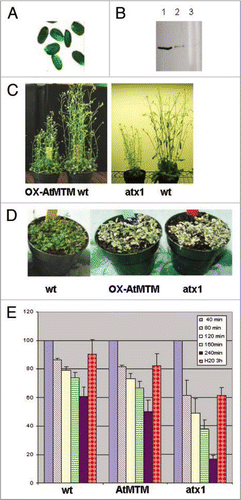
Figure 5 Venn diagrams of the atx1/wt-stressed and the OX-AtMTM1/wt-stressed fractions. (A) Overlapping genes with significantly altered transcript levels in the atx1 and in stressed wild type backgrounds; (B) Overlap of downregulated genes in the atx1, OX-AtMTM and wild type drought-stressed samples.
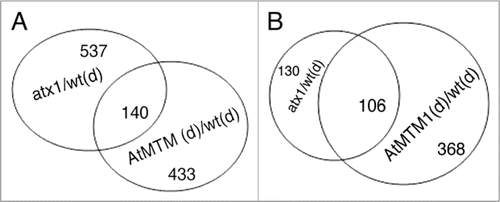
Figure 6 A model involving AtMTM and ATX1 activities in the drought response. This model builds on and extends an earlier model suggesting that the lipid ligand PtdIns5P increases upon osmotic stress and negatively regulates ATX1 activity.Citation9 Water withdrawal negatively affects ATX1 activity (bar 1); AtMTM1 has phosphatase activity generating the ligand (bar 2); excess cellular AtMTM1 affects transcript levels of the shared target genes like loss of ATX1 function does (bar 3). The model assumes that the effects of AtMTM1 and drought stress upon ATX1 activity are mediated by the lipid. however, the increase of PtdIns5P under stress in Arabidopsis remains to be shown (broken bar); Arrows and T-shaped bars indicate activation and repression events, respectively.
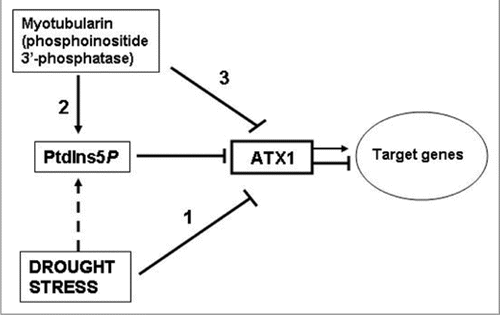
Table 1 Association of the shared ATX1-regulated/drought-induced/OX-AtMTM affected genes with cellular structures and response mechanisms